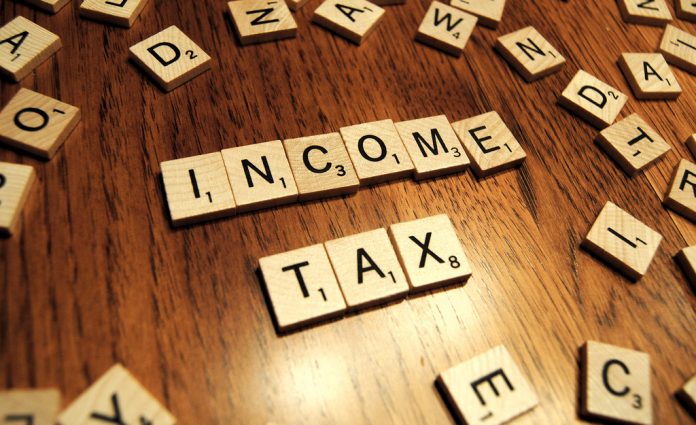This article is written by Monesh Mehndiratta, a law student at Graphic Era Hill University, Dehradun. The article explains Section 270A of Income Tax Act, its applicability, and other provisions related to it.
It has been published by Rachit Garg.
Table of Contents
Introduction
With urbanisation and industrialisation, there has been a tremendous increase in the salaries and incomes of people. As a result of that, they have to pay an income tax on their income. The Income Tax Act, 1961, deals with the provisions and procedures for paying tax. But the Finance Act, 2016 has brought several changes to the Act, which include replacing the old tax regime with a new tax regime under Section 115 BAC of the Act. It has also introduced a new provision, i.e., Section 270A, that deals with penalties in cases where the income has been underreported or misreported. Earlier, Section 271(1)(c) gave the penalties if the income had not been furnished properly or concealed in any way. Like this, the Section has introduced various other changes and made the system of paying tax more reliable and easy. The changes brought by the Section have been explained in detail further in the article.
Applicability of Section 270A of Income Tax Act
This Section applies to a person who has either misrepresented or underreported his income. The following persons can impose such a penalty in a case:
- Assessing officer or,
- Commissioner (appeals), or
- Principal commissioner or,
- Commissioner
However, the question of whether to impose a penalty or not is decided differently in each case. Earlier, a penalty was imposed if the income was concealed or false or inaccurate income was given. These two grounds were treated separately and subject to the satisfaction of the officer. But now the only ground of penalty for ‘under-reported income’ is not subject to the satisfaction of the officer but has to be determined by the facts and circumstances of a case in the due course of its proceedings.
Under-reported income under Section 270A of Income Tax Act
Meaning
The Section has not defined the word ‘under-reported’ but provided the instances under which an income shall be deemed to be under-reported. It provides 7 such situations, out of which 3 relate to normal income and the other 3 relate to income which is assessed under the provisions of MAT/AMT. The circumstances that amount to underreporting of income are as follows:
- In case of normal income
The income is said to be underreported if:
- The assessed income is greater than the income determined as per Section 143 of the Act when the return is filed.
- When the return of income has not been filed then the assessed income which is greater than the maximum and not chargeable to tax will be counted as under-reported income.
- If the income has been reassessed, then such income that is greater than the assessed income will be under-reported income.
- Income assessed under Section 115JB and 115JC
In the event that the income has been determined according to Section 115JB and Section 115JC, the following income will be counted as under-reported income:
- The total assessed income is greater than that assessed as per Section 143 of the Act.
- The assessed income is greater than the maximum income and is not chargeable to tax.
- The total reassessed income is greater than the assessed income.
Other than these, there is one more income which is counted as under-reported income. If the assessed income or reassessed income has the ability to reduce the loss or convert it to income, then such income will also be called under-reported income.
Intangible additions
According to sub-section 4 of Section 270A, if the source of any receipt, investment, or deposit is claimed to be such an amount which is deducted or added to the income while the losses were computed in any year prior to the assessment year in which such receipt or deposit appeared and no penalty was imposed, then the under-reported income will be the amount added to cover up this receipt, deposit, or investment. Since these are additional amounts, they are known as intangible additions.
According to sub-section 5, the preceding year in sub-section 4 means:
- An immediate previous year to the year in which such a receipt, deposit, or investment appeared is called the first preceding year.
- When the amount in the first preceding year is not sufficient, then the year immediately before the first preceding year will be considered and so on.
How to calculate under-reported income
The process to determine the penalty on the under-reported income is given under sub-section 3 of Section 270 A. It can be divided into the following 3 cases:
- Normal income
- Income determined under Sections 115JB and 115JC.
- Assessed or reassessed income can reduce the loss.
Normal income
- If it is the first assessment of income and a return is filed, then the under-reported will be the difference between assessed income and income determined as per Section 143 of the Act. For example – a company has filed its return for Rs. 20 lakhs and claimed exemption under Section 80IAB of the Act for Rupees 35 lakhs, but it was not allowed due to some fault in the application, and so the processing was done for Rupees 55 lakhs, but the assessment according to Section 143 was Rupees 65 lakhs. Thus, the under-reported income will be 65-55=10 lakh rupees.
- In the event that no return is filed for the first assessment, the under-reported income will be the assessed amount for companies and firms, but for others it will be the difference between the assessed income and the maximum income which is not chargeable to tax.
- If the income has already been assessed, the under-reported income will be the difference between the reassessed income and the assessed income of the previous order.
Income determined under Section 115JB and 115JC
The under-reported income, in this case, can be easily calculated with the help of a formula:
(A-B) + (C-D) where,
- A is the income assessed according to other general provisions.
- B is the income which would have been chargeable if the assessed income was reduced by under-reported income.
- C is the income which is calculated according to the above-mentioned sections.
- D is the income which would have been chargeable if the assessed income under Sections 115JB and 115JC was reduced by under-reported income.
Income can reduce the loss
If the assessed or reassessed income can reduce the loss or convert it into income, then the under-reported income in this case will be the difference between the loss that has been claimed and the assessed or reassessed income.
Tax on under-reported income
Sub-section 10 of Section 270 A provides that tax payable on under-reported income is 50% or 200%. This will be calculated in the following ways:
- If no return has been filed and the income is assessed for the first time, then the tax on under-reported income as a maximum not chargeable to tax will be calculated as if it was the total income.
- If the total income is assessed according to Section 143 or reassessed as per the previous order, then the tax will be calculated as if it was the total income.
- In other situations, the tax will be calculated by a formula (X-Y) where,
- X is the tax calculated on the under-reported income which is determined according to Section 143 or assessed according to any previous order.
- Y is the tax on the total income determined as per Section 143 or assessed as per any previous order.
Exemption from under-reported income

The Section provides certain circumstances under which the income will be exempted from being counted as under-reported income. These are:
- If the assessee makes an application giving a proper explanation and material facts of the income and the officer is satisfied with the explanation provided that it is bonafide, the income will not be considered as under-reported.
- If the under-reported income is calculated with the help of estimation and the method used is not reliable and does not provide a fixed income, then such an income cannot be considered as underreported.
- If the under-reported income has been determined by the assessee and he has himself estimated a lower addition on an issue or disclosed all the material facts related to disallowance, then such income will not be considered.
- The under-reported income in transfer pricing cases can be exempted only if:
- All the documents have been prepared by the assignee as given in Section 92D of the Act.
- The assignee has disclosed all the international transactions.
- Provided all the material facts related to such transactions.
- During search cases, the amount that is undisclosed and the penalty that is levied under Section 271AAB are also exempt.
Misreported income under Section 270A of Income Tax Act
According to Section 270A of the Act, if the income is under-reported the quantum of the penalty will be 50% of the tax that is payable, but if it is due to misreported income, then the quantum will be 200%. The Section has given the list of under-reported incomes that will be considered misreported under sub-section 9. These are:
- Income that is suppressed or misrepresented.
- Income in which the claim of expenditure has not been substantiated by any evidence.
- Income that has not disclosed any international transactions if the provisions of Chapter X of the Act apply to such income.
- If the investments have not been recorded in the books of account, then such income will be considered misreported.
- False entry or record in books of account.
- If there is a bearing on the total income but it has not been recorded in the books of account then such income will not be considered.
Calculation of penalty and tax on under-reported and misreported income
Let us understand this with the help of an example. Supposed ABC company filed for the return, and the case has been completed as per Section 143 of the Act for an annual year. The tax on the return is 31.20%. Details of the income are given below:
| Details | Income according to normal provisions | Income according to MAT |
| income/profit | 800000 | 2200000 |
| Misreporting income (addition) | 50000 | 50000 |
| Under-reporting income (addition) | 60000 | 0 |
| Under-reported income for deferred tax to be calculated according to MAT. | 0 | 70000 |
| Total | 910000 | 2320000 |
Step 1 – calculation of under-reported income
| A (total income according to normal provisions) | 910000 |
| B (total – under-reported – misreported) | 800000 |
| C (profit according to assessment order) | 2320000 |
| D (profit – under-reported except one that has already been considered in normal provisions – misreported – MAT) | 2250000 |
| (A-B) + (C-D) | 180000 |
Step 2 – calculate the tax on under-reported income at the rate of 31.20%.
| Under-reported | Misreported |
| 60000 | 50000 |
| 70000 | 0 |
| Total = 130000 | Total = 50000 |
| Tax: 130000 * 31.20 = 40560 | Tax: 50000 * 31.20 = 15600 |
Step 3 – calculate the total penalty
| Under-reported income | 50% of 40560 | 20280 |
| Misreported | 200% of 15600 | 31200 |
| Total penalty | 51480 |
Immunity from penalty under Section 270A of Income Tax Act
A person can seek immunity from the penalty under Section 270A and prosecution under Section 276C or Section 276CC by filing an application and following the procedure given under Section 270AA of the Act. A person can seek immunity in the following ways:
- He must make an application to the assessing officer to grant immunity from the penalty and proceedings within one month of the assessment order. However, the following conditions must be fulfilled:
- It is necessary that the tax be paid within the specified period as given in the notice.
- No appeal must be made with respect to the assessment order.
- The officer, after satisfaction of all the above conditions and on the expiry of the period of appeal, grants such immunity.
- The immunity can be given in the case of misreported income.
- The officer can either accept or reject the application within one month after it has been received.
- It is mandatory to give an opportunity to the assignee to present his case before rejecting the application.
- The order of the assessing officer will be considered final.
Relevant case laws
There are, as such, no cases for Section 270A as it is newly inserted into the Act, but there are some previous precedents that still hold importance while imposing any kind of penalties under the Act. The names of the cases and their judgements are given below:
- In the case of Rajeev Kumar Gupta v. CIT (1980), it was held that any authority before imposing a penalty on any person must give him an opportunity to be heard. This is also mentioned under Section 274 (1) of the Act, which makes it mandatory for the authorities while imposing the penalty on the assessee to give him an opportunity to be heard or else it will be considered as a statutory violation.
- The Court in the case of Dilip N. Shroff v. CIT (2007), held that to impose any penalty on the assessee, his malafide intention must be proved. The word ‘inaccurate’ means a deliberate act or omission. Thus, mens rea is necessary to attract a penalty on the assessee. This was reiterated by the Supreme Court in the case of Reliance Petroproducts Pvt. Ltd. v. CIT (2010).
- In the case of Vijay Power Generators LTD. v. ITO (2007), it was held that the material facts or evidence found in the assessing proceedings must not be ignored. It must be examined carefully to determine whether the assessee has concealed the income or part of it.
- The Court in the case of CIT v. Caplin Point Laboratories Ltd. (2021), held that if the claim of any deductions or allowances has been made by the assessee based on any case law under bona fide belief but the assessing officer interpreted it differently, then in such a case there will be no penalty.
- If a legal claim for taxability of a particular income under a particular head has been rejected by the assessing officer, then it is not an appropriate ground to impose a penalty on him. Mere speculation of a loss also does not attract any kind of penalty. (CIT v. Bharatesh Jain, 2010)
Conclusion
There have been a lot of changes to the Income Tax Act of 1961 because of the Finance Act of 2016. One such change is the insertion of Section 270A, which replaced Section 271(1)(c) of the Act. It has been inserted to bring objectivity, clarity, and certainty to the laws. The previous section mentioned the penalty if the income has been concealed or considered inaccurately. But now the penalty is given due to underreported income and misreported income. However, these have not been defined anywhere under the Act, but it has provided cases where the income will be considered underreported and misreported. The words of the bare act and the interpretation of the new mechanism may lead to issues and litigation which need to be resolved to make the provisions unambiguous.
Frequently Asked Questions (FAQs)
What is the situation of transfer pricing cases in under-reported income?
The under-reported income in transfer pricing cases can be exempted only if:
- All the documents have been prepared by the assignee as given in Section 92D of the Act.
- The assignee has disclosed all the international transactions.
- Provided all the material facts related to such transactions.
Where can a person appeal against the order of an assessing officer?
A person cannot appeal against the order of the assessing officer under Section 270AA if the application has been accepted. However, if the application for immunity has been rejected, then an appeal can be made to C.I.T (appeals), but the period of making an application to the order rejecting the application will be excluded.
What is the difference between Section 271(1)(c) and Section 270A?
Section 271(1)(c) provided the provision of penalty in case the income has been concealed or considered inaccurately where it ranged from 100% to 300% but according to Section 270A, a penalty is imposed in case of underreported income or misreported income. It is 50% of the tax for underreported income and 200% of the tax for misreported income. Moreover, the penalty under the former can only be imposed up to the annual year 2016-17 but the penalty under the latter is for the annual year 2017-2018 onwards.
References
- https://taxguru.in/income-tax/penalty-sec-270a-concealment-reporting.html#5_Exclusions_from_Under_reported_income_under_Sub_Section_6_of_Section_270A
- https://www.taxmanagementindia.com/visitor/detail_article.asp?ArticleID=9156
- https://www.aaptaxlaw.com/income-tax-act/section-270a-of-income-tax-act-penalty-for-under-reporting-and-misreporting-of-income-270-a-from-1-4-2017.html
- https://incometaxmanagement.com/Pages/Tax-Ready-Reckoner/Penalty/Penalty-For-Underreporting-And-Mis-Reporting-Of-Income.html
- https://www.wirc-icai.org/images/material/3-270A-and-270AA-JP.pdf
- https://ctconline.org/wp-content/uploads/pdf/2019/seminar-presentation/income/21-4-2018-ca-devendra-jain-penalty-270a.pdf
Students of Lawsikho courses regularly produce writing assignments and work on practical exercises as a part of their coursework and develop themselves in real-life practical skills.LawSikho has created a telegram group for exchanging legal knowledge, referrals, and various opportunities.
You can click on this link and join:https://t.me/lawyerscommunity
Follow us on Instagram and subscribe to our YouTube channel for more amazing legal content.
 Serato DJ Crack 2025Serato DJ PRO Crack
Serato DJ Crack 2025Serato DJ PRO Crack










 Allow notifications
Allow notifications



